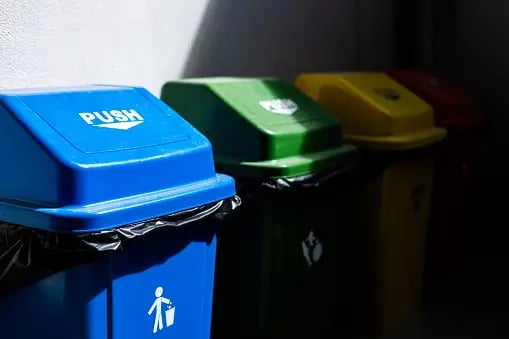Like many terms in the sustainability space, “materiality assessment” needs some unpacking. What is it? What needs to be assessed? Why? And once that’s done, then what?
In plain terms, a materiality assessment takes stock of where companies can best impact or influence the sustainability agendas that matter most. Companies survey internal and external stakeholders and once the results are in hand, they can set targets and shape strategy. For those that undertake the process, the importance is easy to see: Materiality assessments help organisations pinpoint big sustainability issues and where big progress can be made.
Yet sustainability reporting is often voluntary. And because companies decide the process themselves, it comes in many shapes and sizes. In terms of the best fit for your assessment needs, both the Sustainability Accounting Standards Board (SASB) and Global Reporting Initiative (GRI) offer quality frameworks. Yet consistency can still pose a challenge within a company when reports defy straightforward comparisons. It can also be challenging to select the most appropriate framework for your business needs - if you are looking for a simple overview of the most common frameworks and their applicability, check out our guide to selecting the best ESG framework for your business.
For organisations that take sustainability seriously, all reports must a) align clearly and b) measure the variables that truly impact the company directly or indirectly.
What is materiality?
Materiality combines two key aspects: how much certain goals or statistics matter to company stakeholders and how much impact the company can have on issues stakeholders care about.
Here it helps to think of “materiality” in terms of relevance and influence—you need both. If an issue is irrelevant to stakeholders, there’s no (significant) materiality; the same goes if companies lack the ability to foster change (as it may involve factors far beyond their control). When there’s a match, it leads to effective prioritisation. You’re at an intersection where your company is empowered and stakeholders are energised.
“A material sustainability issue is an economic, environmental, or social issue on which a company has an impact, or may be impacted by. It may also be one that significantly influences the assessments and decisions of stakeholders.” - NYU Stern Center for Sustainable Business
With the most significant issues identified in this way, organisations can start down the road to smart, strategic change. A robust materiality assessment will influence future judgements, decisions, and actions—as well as how those issues could impact the company, its stakeholders and society.
Why does materiality matter in sustainability reporting?
Materiality assessments help companies focus on tackling issues that will make a significant impact in the environmental, social, and governance realms, and bolster business’ longevity as a result.
Materiality also takes the guesswork out of setting a sustainability agenda. The organisation's efforts first go toward high-impact, high-concern topics and from there moves in the direction of lower-impact, lower-concern topics. Notice how this avoids tackling everything at once. When you narrow your focus, your efforts become intentional and impactful and you’ll avoid spreading resources too thin.
Materiality assessments are also an integral component of developing net-zero strategies. Our 10-step guide to Net Zero goes into this in more detail along with how to collect high-quality data, calculate a carbon footprint, and set science-based targets.

How to conduct a materiality assessment?
First, identify how you will be conducting the materiality assessment. Here are three ways many companies approach the process:
- DIY: You might craft your own survey with questions meant to identify your company’s top material issues.
- Third-party consultant: An independent entity can help you to define and identify material issues in an objective manner.
- Software solution: Rio offers comprehensive materiality assessments for organisations of any size and sector. Through interviews, desktop research, and our subject matter expertise, we can help you identify the material issues that matter most.
Now, let’s walk through what the assessment process itself might look like:
- Identify your key stakeholders - think internal (employees, advisors, management) and external (government, investors, customers).
- Identify key materiality issues and prioritise what you want to measure - these usually fall into three categories: economic, social and environmental.
- Design a materiality survey to find out what stakeholder’s value most.
- Branch out to different types of stakeholders to get a holistic view.
- Allow them to rank issues and topics. For example: “Rate the following issues from 1 (least important) to 5 (most important): reducing carbon footprint, gender equality, workplace diversity and inclusion, paying a living wage to all employees, converting to wind/solar power, water availability, going paperless, etc.
- Make it easy to take and tabulate. Think about how those results will later translate into an impactful visual presentation.
- Launch the survey - make sure the navigation and accessibility are user friendly.
How often should you conduct a materiality assessment?
We recommend conducting assessments every one to two years, but it’s also a good idea to let the process bubble up naturally. Listen up for when stakeholders start to ask new sustainability questions. Or, take a quick reality check by asking:
- Has your company changed a lot since you last did an assessment?
- Have your priorities shifted?
- Would it be valuable to do?
What’s the bottom line on timing? It all depends. You can always seek input from passionate, positive stakeholders who champion your best sustainability efforts.
Putting it together
Having a third party help with your materiality assessment can lend credibility to your reporting and help you collect feedback. Having a partner like Rio can help you set goals that matter, measure metrics over time, and make reporting easier.











